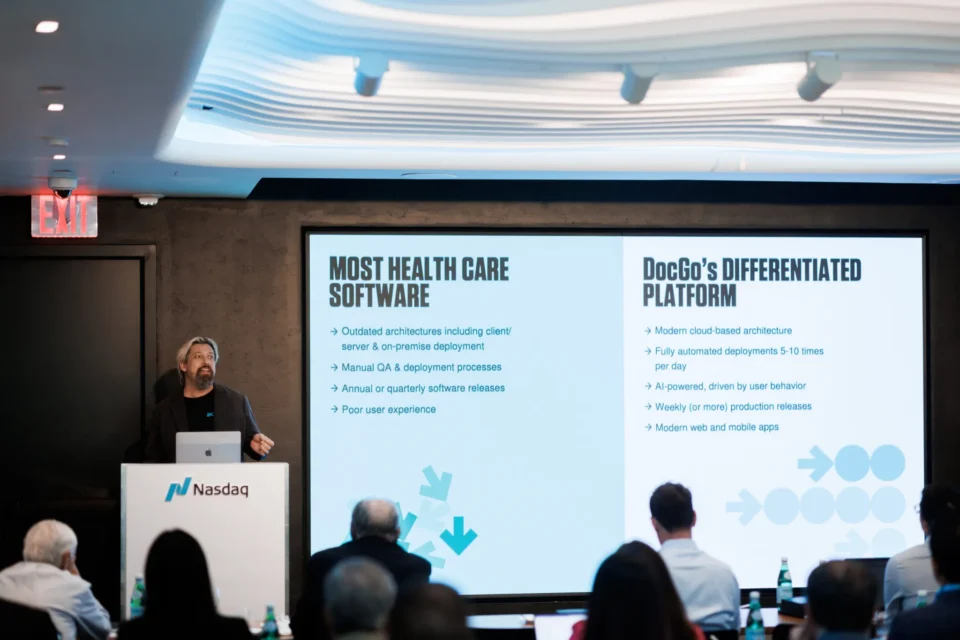As healthcare slowly shifts toward a value-based model, the term has become a buzzword—simultaneously overused and misunderstood. For Saquib Mahmud, Vice President of Healthcare Quality at DocGo, the challenge lies in how different providers interpret and implement this shift.“Value-based care is deeply influenced by how each provider documents and interprets it,” he says. “Some see it as a pathway to better care, while others regard it as an overwhelming administrative challenge.”
At its core, value-based care emphasizes quality over quantity—a fundamental departure from fee-for-service models that have traditionally rewarded providers for delivering a high volume of care. Instead, the focus is on proactive care, aiming for prevention and early intervention to improve patient outcomes and reduce hospital visits. To achieve this broad aim, the Centers for Medicare & Medicaid Services (CMS) has established standards that prioritize quality and consider obstacles like Social Determinants of Health (SDOH). In Mahmud’s view, providers like DocGo’s affiliate medical practices can lead the industry by aligning with this new framework rather than resisting it.
A Learning Curve
The advantages of value-based care are clear—better outcomes, lower costs, and more patient-centered services. However, adoption of CMS-designed industry standards has been uneven. “Providers are navigating a steep learning curve,” Mahmud says. “This involves modernizing workflows, improving patient data systems, and integrating advanced technologies like remote patient monitoring (RPM) and AI-driven insights—all while complying with complex new reporting standards.”
A major hurdle for many is implementing advanced digital tools that go beyond traditional electronic health records (EHRs) to harness real-time data, predictive analytics, and artificial intelligence (AI). These technologies enable providers to personalize care, identify risks earlier, and improve patient outcomes dynamically. “The shift from volume to value requires significant investment in staff training, workflow transformation, and next-generation technology,” Mahmud notes.
HEDIS and the Push for Preventive Care
Central to the success of value-based care is the use of metrics to assess provider performance. Developed by the National Committee for Quality Assurance (NCQA), a nonprofit dedicated to healthcare quality, the Healthcare Effectiveness Data and Information Set (HEDIS) is widely used and recommended by CMS to measure healthcare performance across various services. Its metrics cover preventive care, chronic disease management, and patient satisfaction. According to Mahmud, HEDIS is essential for holding providers accountable for outcomes rather than service volume.
“Preventive care is becoming a major priority for CMS, and HEDIS gives us a standardized way to measure how well we’re doing,” he says. “But the challenge is getting all providers to fully embrace it.” For many, the documentation requirements can be overwhelming. “A lot of providers feel burdened by the shift, which makes sense. This is a radical departure from how healthcare has been delivered for decades.”
Personalizing Care
In prioritizing quality over quantity under a value-based care approach, it’s essential to contextualize and personalize the care provided to each patient and acknowledge the obstacles to care that might impede improved patient outcomes. Social Determinants of Health (SDOH)—non-clinical factors such as housing, food security, and transportation—can profoundly influence health outcomes. As the U.S. healthcare system contends with persistent disparities in access and results, addressing SDOH is becoming a foundational element in effective care delivery, moving beyond mere metrics to drive meaningful, patient-centered outcomes.
“Social determinants are often invisible to the traditional healthcare system,” Mahmud explains. “Providers may not know that a patient missed their appointment because they couldn’t afford a cab fare, or that they’re skipping their medication because it’s too expensive.”
This growing recognition of the importance of SDOH has pushed policymakers to act. CMS is taking steps to integrate SDOH screenings into routine care, particularly in Medicare Advantage and Medicaid. By 2025, healthcare providers will be required to screen for these factors more comprehensively. “It’s a monumental shift,” says Mahmud. “CMS is pushing the industry to see health more holistically, recognizing that social factors are often just as important as medical ones.”
Standing at a Crossroads
For many in the healthcare sector, the shift to value-based care represents both an opportunity and a challenge. On one hand, it promises a more equitable, efficient healthcare system. On the other, the complexities of implementation—from SDOH screenings to HEDIS metrics—can feel daunting. Yet, as Mahmud emphasizes, the move toward value is not just a regulatory necessity—it’s a chance to fundamentally transform healthcare delivery.
“We’re at a crossroads where the industry needs to choose: stick with what we know or embrace change to build something better. The transition to value-based care won’t happen overnight, but it’s the future of healthcare—and a future worth investing in.”








